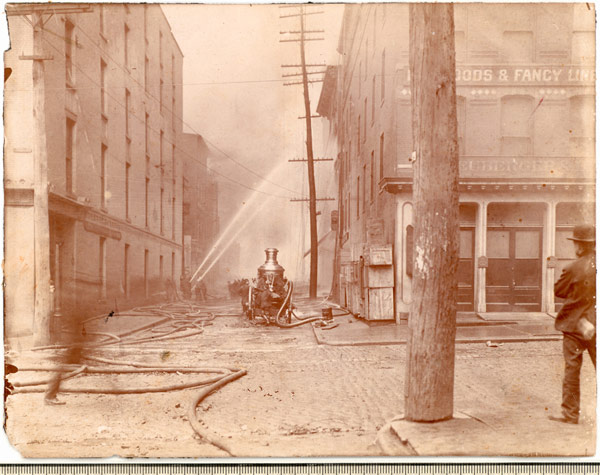The Great Baltimore Fire and how a disaster set the standards in the fire industry.
What does a great fire that was extinguished over 112 years ago have to do with today’s fire hose?
In 1904, Teddy Roosevelt was President of the United States, Henry Ford and his partner had incorporated the Ford Motor Company a year prior, and New York City would hold its first New Year’s Eve celebration in Times Square. 1904 was also the year of the Great Baltimore Fire, one of the worst fires at the time of our young nation.
It was a quiet, frozen morning on February 7th, 1904 in Baltimore, Maryland. The city’s population was about 500,000 residing citizens and it was beginning to see the modernity of the 20th century in the forms of a new city courthouse, the luxurious Belvedere Hotel, and the tallest building in Baltimore at the time, the Continental Trust Company Building.
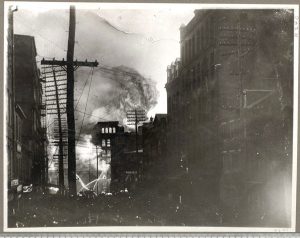
The explosion of the John E. Hurst building was just the beginning. Courtesy of the Baltimore Sun.
The deadly fire began in the John E. Hurst & Company building, just shy of noon that fateful day. As the alarm sounded, firefighters rushed to answer the call from several different engine units. As the firefighters busted through the burning building to investigate, an explosion sounded, shooting embers through the doomed building’s broken windows and onto its neighboring structures.
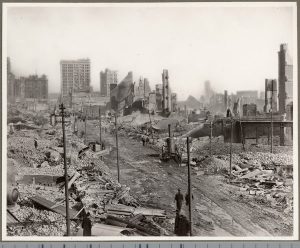
The newly built Continental Trust Co. Building, tallest structure at the time, still stood. (Baltimore Sun)
As evening encroached upon the blazing city, the fire had spread to the heart of the district. The firefighters decided to fight fire with fire and broke out the dynamite to attempt to stop it from spreading. As you can imagine, this made things worse.
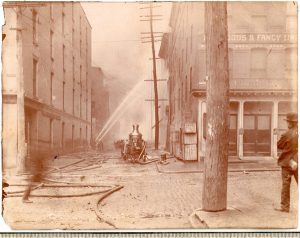
Other cities’ fire departments who rushed in to help could not hook up with Baltimore’s hydrants. (Baltimore Sun)
Help arrived from Philadelphia, Wilmington, Washington, York, Chester, Harrisburg, and Altoona, each unit bringing their own equipment in tow. However, firefighters soon discovered that their equipment would not fit into Baltimore’s hydrants, as each city had different standards. Many of the firefighters could do nothing but stand and watch in horror.
The fire blazed on through Monday, February 8th with 25 mph winds whipping the flames. The fire engulfed the piers despite the efforts from a line of 37 steam fire engines desperately trying to save them. As it ate through the piers, the fire finally smoldered to a stop late afternoon, leaving the ashen city destroyed.
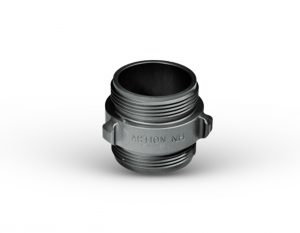
A double male adapter with National Standard Thread. Courtesy of Action Coupling.
The National Fire Protection Association and National Board of Fire Underwriters established certain standards in an effort to prevent further incidents like the one faced by the out of state fire units during the Baltimore Fire. Although it took a while for these standards to truly catch on, today we have the National Standard Thread, along with standardized hydrants, and adapters firefighters carry to avoid another disasters like the Great Baltimore Fire that continues to leave its mark, over a hundred years later.
